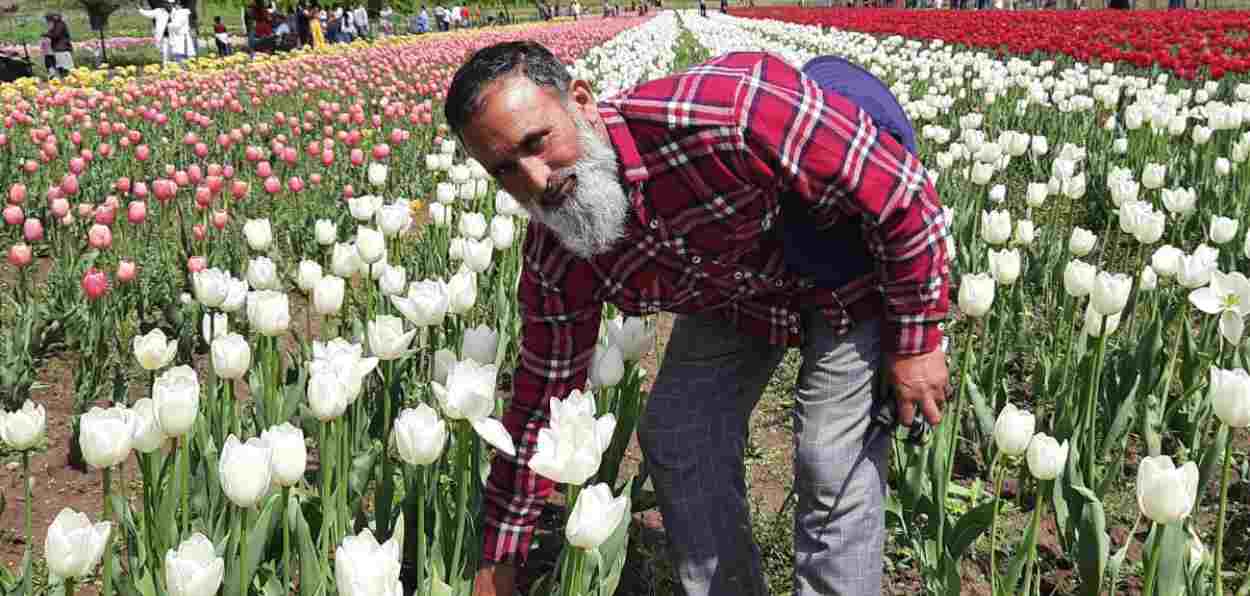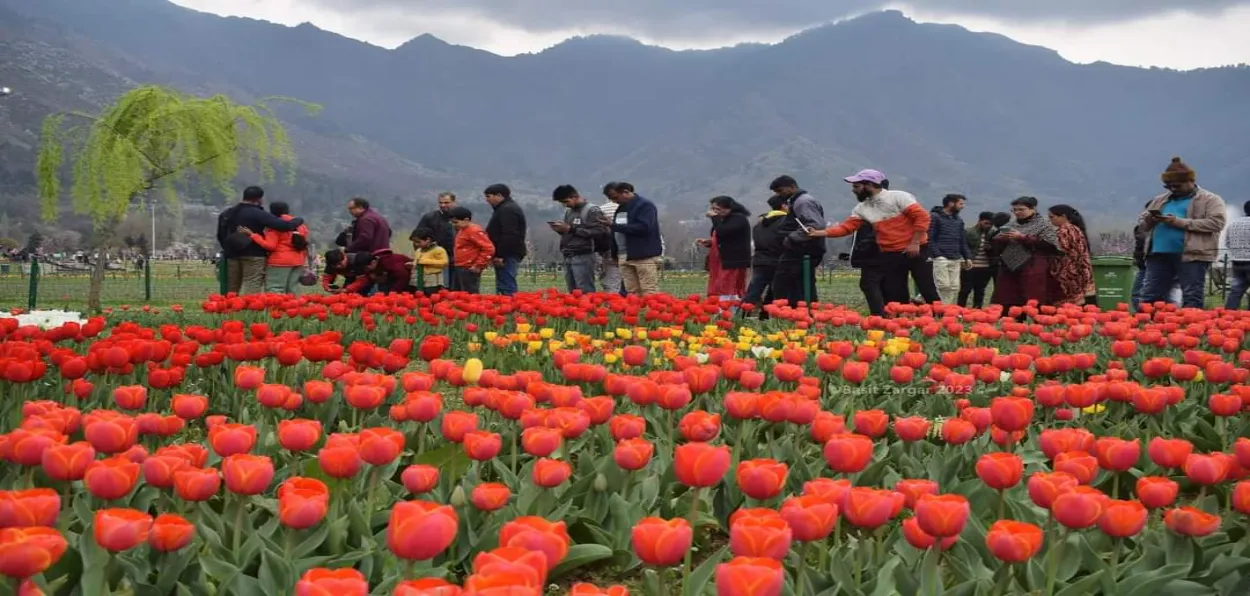
Ehsan Fazili/Srinagar
Within a few years, the tourists visiting the largest Tulip Garden of Asia at Srinagar, Kashmir, could extend their stay to see the magnificent Cherry blossom generally associated with Japan.
As the Tourism authorities are celebrating the success of this Tulip season that saw a record 4 lakh tourists flocking in since it was thrown open on March 23, their plans to start a Cherry Orchard next to it are already afoot.
Asif Ahmad, Floriculture Officer of Tulip Garden, told Awaz-The Voice that out of the 650 kanals of land of Siraj Bagh, on which the Indira Gandhi Memorial Tulip Garden is located, some 250 Kanals will be used for creating a Cherry garden. This will include a big patch of land and the entire periphery of the Tulip garden.
Though Cherry is a natural crop in Kashmir, for this saplings were imported from Japan to create a Japanese-style Cherry Garden.
The work on the Cherry orchard started last year; some 2500 saplings have already been planted. The Rs 10 crore project is being executed in collaboration with the Japanese Government and is facilitated by the Ministry of External Affairs.
Tulip Garden has prolonged the Tourism season in Kashmir by a month and the proposed Cherry Garden will further prolong it by another month. Otherwise March to May were traditionally dormant period for the tourism industry in Kashmir. The Tulips bloom had added a month to Tourism calender of the Valley and the proposed Cherry garden is bound to add another month to it.
 A view of the Tulip Garden, Srinagar (Photo: Basit Zargar)
A view of the Tulip Garden, Srinagar (Photo: Basit Zargar)
At present, the opening of the Tulip Garden heralds the tourist season in Kashmir after a harsh winter. Since 2008 it has been attracting tourists from across India and thus boosting the tourism-linked economy.
"Tulip Gaden has become a major attraction for the whole country and with it and more places opening up, the valley’s tourism season is almost around the year”, said Asif Ahmad. The garden that opened on March 23 will be closed within the next few days.
The IGM Tulip Garden was recently included in the Book of World Records (London) in 2023 for being “Asia’s largest Tulip Garden with 1.5 million plants and home to 68 varieties of tulips”.
The certificate of inclusion in the prestigious list was presented to Sheikh Fayaz Ahmad, Commissioner, Department of Floriculture, Parks and Gardens, of the Jammu and Kashmir government.
This year the Tulip garden boasted 17 lakh flowers as against 15 lakh last year. “We have imported 73 varieties (tulip) this year from the Netherlands”, Asif Ahmad said.
Many new imported plant varieties for the garden include Daffodils and Hyacinths. He said despite rains – Tulips don’t bloom in rain – the footfall of more than 4 lakh in a month was impressive.
Interestingly, the number of locals visiting the garden yhis time was less given the Ramazan coinciding with the bloom.
The Tulip Garden is tended by over a hundred staff members and gardeners of the Floriculture Department. Asif Ahmed said for them only four weeks when the garden is open for the public are lean periods as they are busy around the year. “The work starts again 10 days after the garden is closed for the public. He says the garden is the result of the hard work of the gardeners and field staff.
 Chief garderner Ghulam Mohammad Mottu tending to the Tulip flowers
Chief garderner Ghulam Mohammad Mottu tending to the Tulip flowers
Ghulam Mohammed Mottu, the Head Gardener, popularly known as “Moti” has been working at the Tulip Garden for about a decade. Having served the Floriculture Department at different places since 1987, Moti said that while working at the garden he has acquired a wide knowledge and expertise in the rearing of tulip bulbs and preparing of soil beds at different stages around the year.
He explained the process: The gardeners remove the stem and wilting flowers followed be deweeding and turning around the soil. This is followed by removal of bulbs and storing them. Eventually the gardners lay 250-ft long fresh flower beds after plowing the soil with tractors, firtilise the soil. This process continues for two months up to the end of June.
From November onwards the process of replanting bulbs begins. “We take a breather during this month of flower show only” every year, against the general belief that there could be no work after the Tulip Garden is closed for the visitors, he told Awaz-The Voice.
“We can take holidays during this month only”, while it is continuing work on the fields throughout the year, he pointed out.
ALSO READ: Wakf to restore neglected 400-year Pather Masjid in Srinagar
Tulip Garden is nestled between the Dal Lake in the Zabarwan foot hills and adjacent to the Botanical Garden. These gardens are located amid the row of Mughal Gardens from Harwan, Shalimar, Nishat, and Cheshma Shahi, which continue to be the main attractions for tourists to Kashmir.
